Hulton Abbey to Ruston
Grange
Sneyd Street
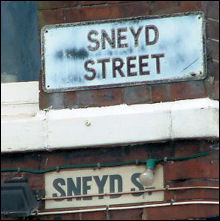

Yates 1775 map showing
Sneyd Green
It is known that the trackway taken by
the monks on their journey from the Abbey to their farmlands at Ruston
went via Sneyd Street which can easily be seen on this map (light blue
line) at the bottom of Sneyd Street was a track which is now Grange Street
(dark blue line).
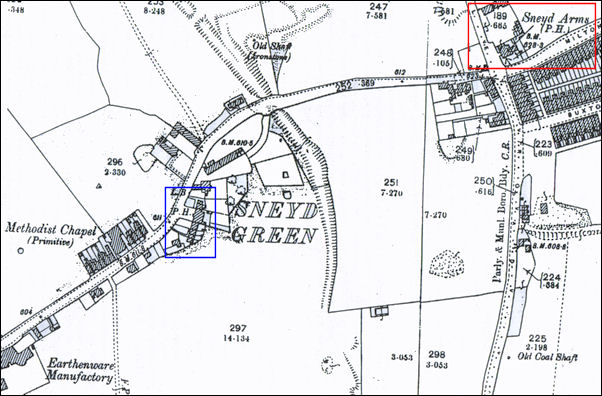
1899 OS map of Sneyd
Green
Sneyd Street runs across
the map. The Sneyd Arms shown by the red square.
St. Andrews church is not shown as building was not started until 1900.
Four cottages and the Old King and Queen Inn are marked by the blue
square.
Sneyd Arms
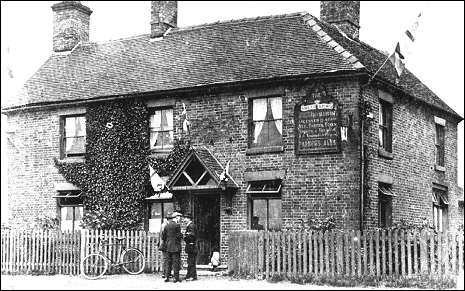
Postcard of the original
Sneyd Arms
The Sneyd Arms became a Parkers
Inn in 1905.
The licensee's name on the board is Brocklehurst,
members of the Brocklehurst family lived in the
Sneyd Green area and owned the farm in Birches Head Road.
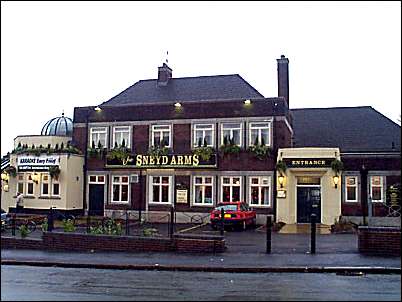
Sneyd Arms - Sneyd Green
Hanley Road view of the
pub, built in 1938,
- the entrance and 'dome' were altered and added in 2000.
photo: Nov 2000
St. Andrews Church
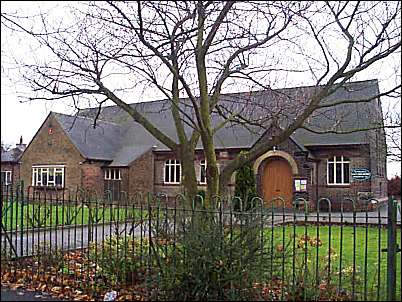
St. Andrews Church -
Sneyd Street
photo: Nov 2000

This church was constructed between 1900 and
1924. It is rectangular in plan, being seven rooms wide by two rooms deep.
The front of the building has two stone boot scrapers and a stone cross at
the apex of the roof. There are several stone plaques around the church
which were laid on St. James' Day 1908 by local people.
© The Potteries Museum & Art Gallery (Staffordshire
Past Tracks)
Housing
The Yates map (top of
this page) shows that there were buildings on both sides of Sneyd Street
by 1775.
Thomas Oulsnam's list of cottagers made on the 18th of October 1794
has 54 houses and cottages at Sneyd Green and one cottage at the "abby"
which would give a population of about 270.
Over fifty years later the 1851 census lists 91 households at Sneyd
Green in the Lordship of Abbey Hulton with a total population of 467.
Most of these cottages were located between the Bulls Head on the
western boundary of the lordship and the farmhouse occupied by the Heath
family east of the Old King and Queen Inn. There was another group of
cottages at the cross roads of the Hanley Road and Sneyd Street. Estate
and ordnance survey maps show that they were constructed in a very
irregular manner usually in rows of three or four cottages on patches of
waste land by the road side.
Andrew Dobraszczyc's notes
This row of old
cottages and an old pub illustrate this.......
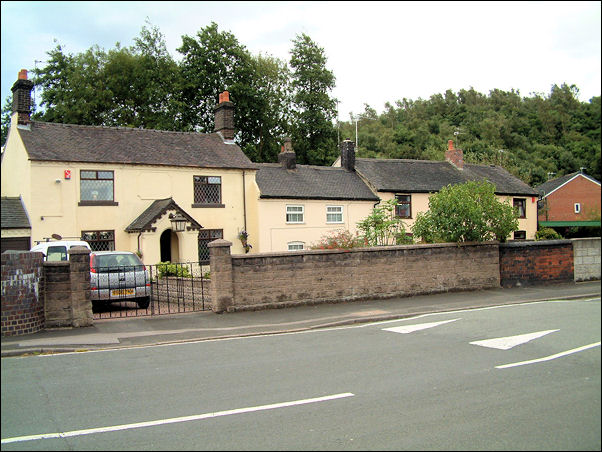
Old cottages on Sneyd
Street
Five buildings in one row have survived on the south side of Sneyd
Street. The buildings are of different sizes and of different heights
which suggests that they were constructed at different times in the
eighteenth or early nineteenth centuries. In the background a the grassed
over reclaimed coal pit tip.
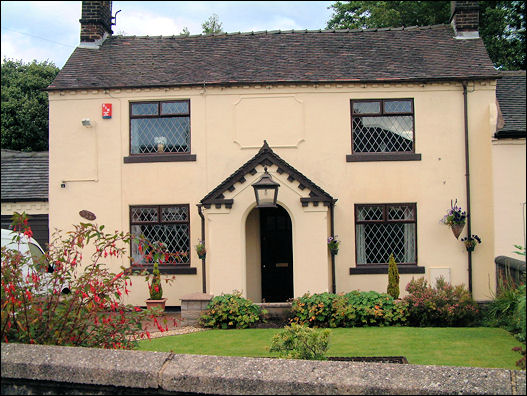
the Old King and
Queen Inn
The first landlord of the Old King and Queen Inn for whom we have any
details was Robert Edge who was the tenant between 1818, when he is listed
in a trade directory, and 1830 when he appears in a survey of the Sneyd
estate.
His successor was William Barlow whose son, John, had taken over by 1851.
A photo of the Old King and Queen shows a bull baiting ring set in the
floor in front of the inn.
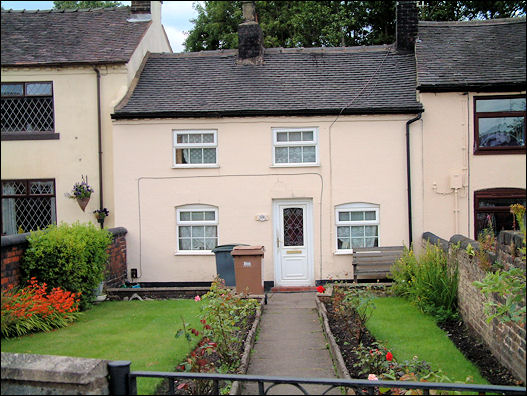
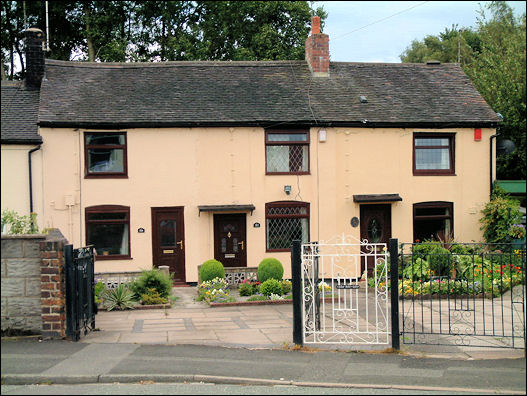
Many of the people who lived on Sneyd Street worked in
the pottery factories at Cobridge.
Ellen Turner, aged 10, who lived at Sneyd Green was interviewed in 1840 by
Samuel Scriven when he produced his report "On the employment of children
and young persons in the Staffordshire Potteries".
She worked at Messrs James and John Goodwin's
earthenware factory in Cobridge:
"I am a paper cutter for John Turner,
my father. I cannot read; I cannot write. I went to day school about two
years ago, at Cobridge; I was there six months, I reckon. I have been to
work altogether less than 12 months. I used to stay at home with mother.
Father's a printer; he worked four days last week; there was not work.
Mother is a transferer; she has six children; only two work; one runs
moulds; the other's a turner; they have regular work; one gets 2s, the
other 3s, I get Is 6d, father gets 18s. I come to work at half-past six.
and go home at six. I went to school last Tuesday night, to learn
writing. I got to Sunday school at Cobridge."
  
next: more Sneyd
Street
previous: Birches Head Road
|